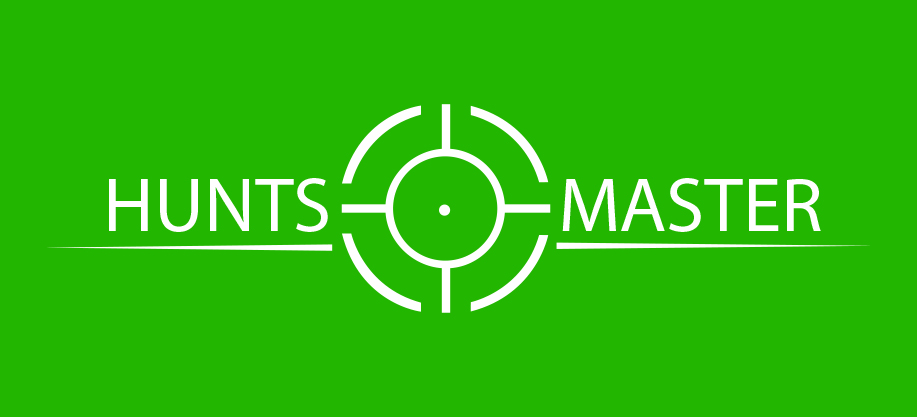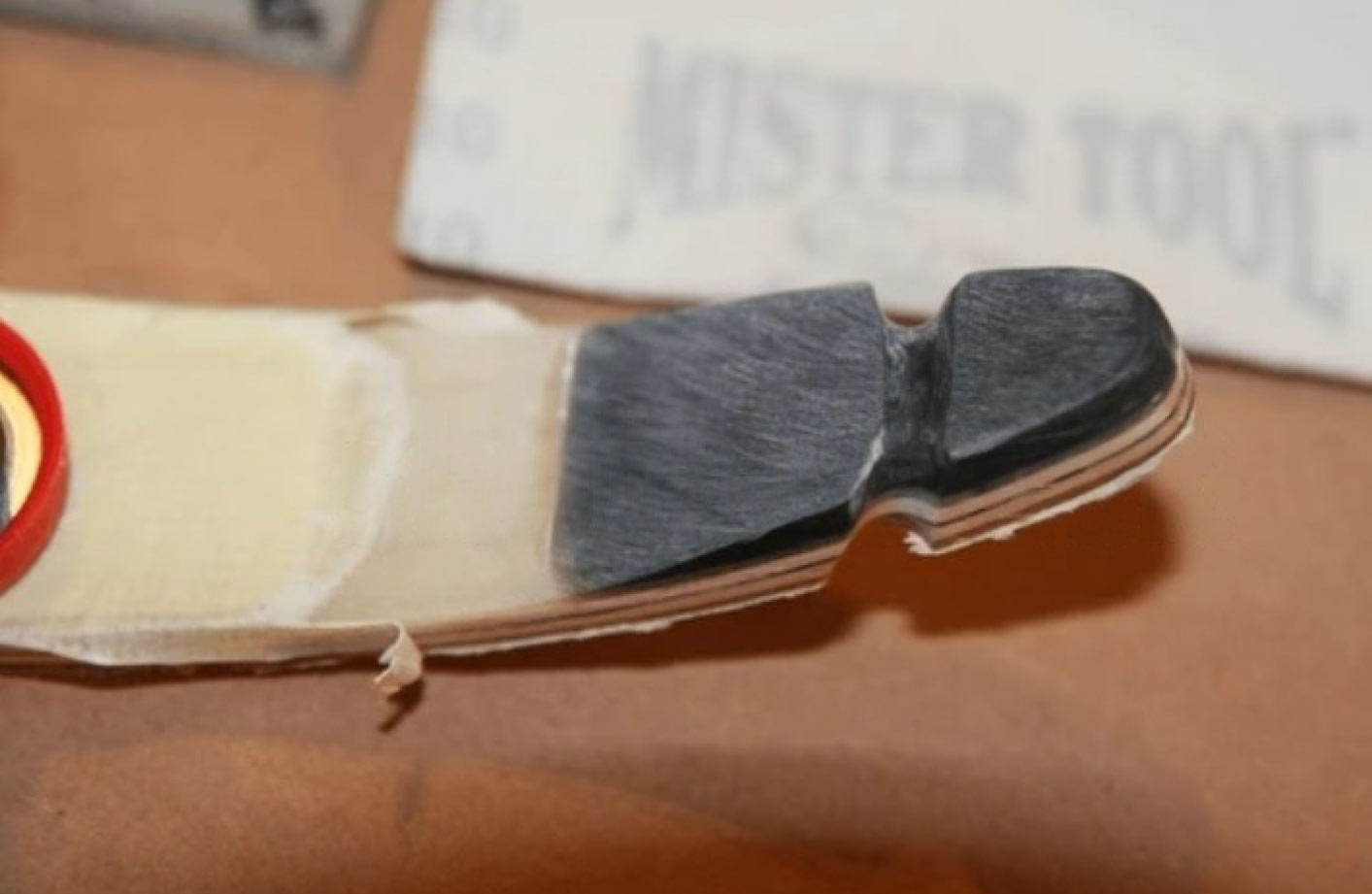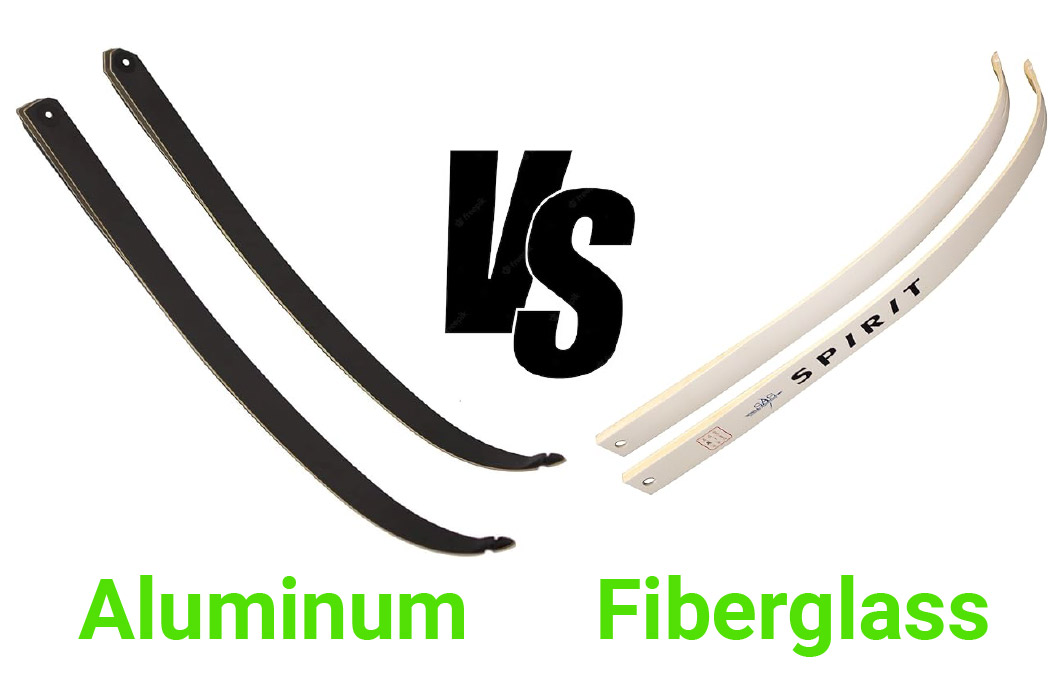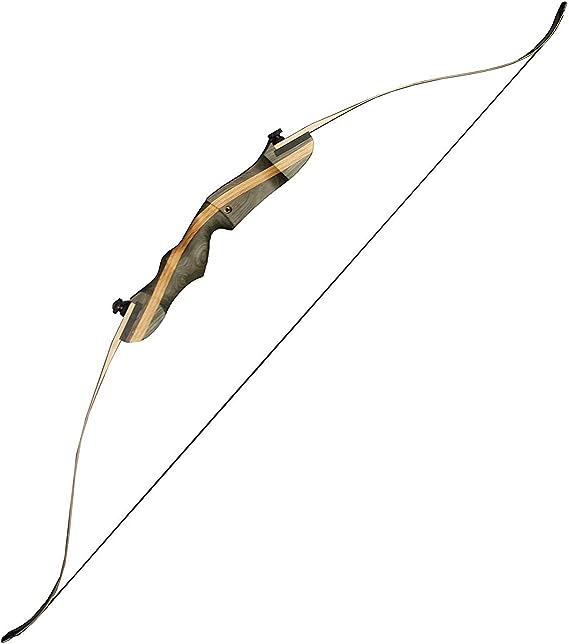In the world of archery, the recurve bow has a special place because of its beautiful shapes and classic style. From its early days as a hunting tool to its use in competitive sports and leisure activities today, the recurve bow has charmed generations with its beauty, accuracy, and attractiveness.
This complete guide will go into great detail about recurve bows, covering everything from their background and different types to picking out the right bow, learning important skills, and keeping your bow in great shape.
A Quick Guide to Recurve Bow: Design, Features, and Performance
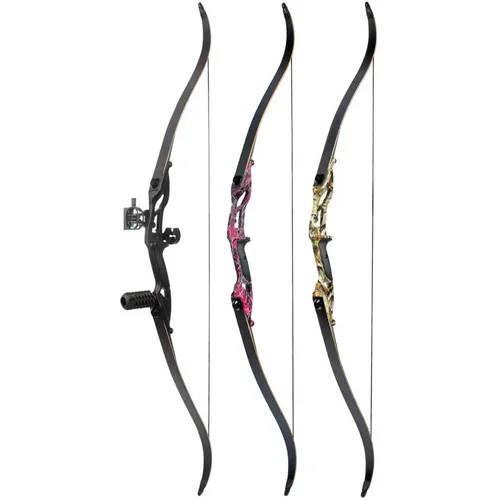
Recurve bows are known for their outward-curving limbs, forming an S-shaped profile that boosts draw weight and arrow speed. This design makes them versatile, ideal for both target archery and hunting. With fewer mechanical parts, they offer a more natural and controlled shooting experience, appealing to archers who appreciate both performance and craftsmanship.
Design Features
Recurve bows are typically made from materials like wood, fiberglass, and carbon fiber, combining flexibility and strength. The central part, or riser, enhances balance and accuracy, while durable synthetic strings ensure consistent performance.
Performance Characteristics
Recurve bows deliver high arrow speeds without heavy draw weights, making them suitable for various archery activities. Their simple design highlights skill and technique, providing a more traditional and fulfilling archery experience.
A Brief History and Evolution of Recurve Bows
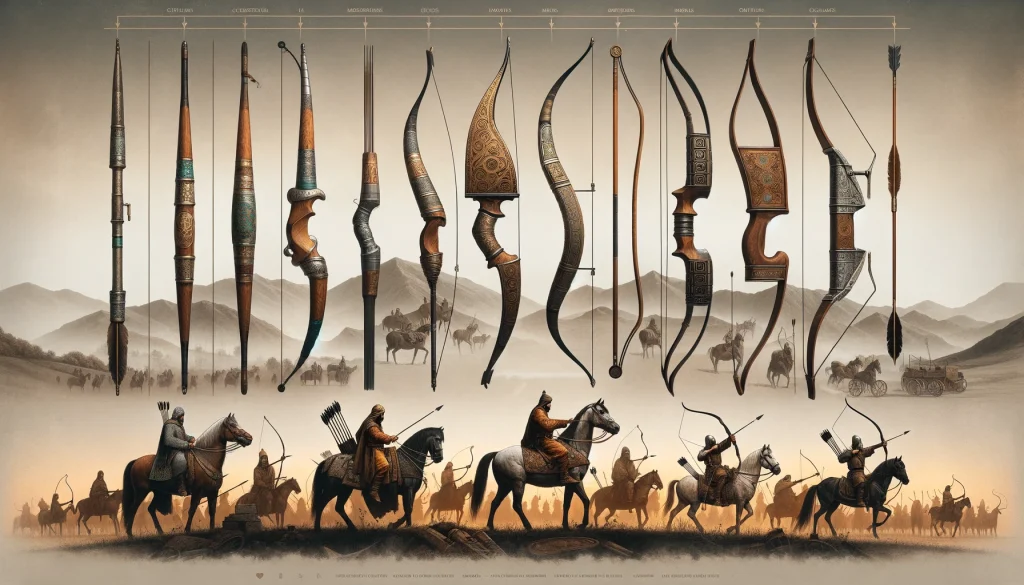

Recurve bows have been used since the Stone Age and were very important for hunting and fighting. In the beginning, they were made of wood, bone, and sinew. Over time, they changed to include horn and bamboo.
Making progress
In the 20th century, new materials like carbon fiber and fiberglass made recurve bows much better by making them lighter, stronger, and more accurate.
Takedown Bows with Recurves
The riser, limbs, and string of the takedown recurve bow are all made in separate modules. This makes it easy to take apart, store, and customize, which makes it more popular among shooters.
Types of Recurve Bows
There are three main types of recurve bows: standard recurve bows, Olympic recurve bows, and takedown recurve bows.
Traditional Recurve Bows
Traditional recurve bows are made by hand and have a simple form. They are sometimes called longbows or hunting bows. Their limbs and risers are usually made of wood, and they often have traditional traits like leather strings and sinew-backed limbs.
Even though they aren’t as strong as modern recurve bows, traditional ones offer a unique way to shoot that puts an emphasis on skill and beauty.
Olympic Recurve Bows
Target archery events are the only place these bows are meant to be used. They have a uniform design that follows the rules of the World Archery Federation (WA). The parts of an Olympic recurve bow are made from high-quality materials like carbon fiber and metal, so they are known for being precise and accurate.
Because they focus on hitting the target accurately, they are a popular choice among professional shooters who depend on their skills to win competitions.
Takedown: Recurve Bows
As the name suggests, takedown recurve bows are easy to take apart into their individual parts, which makes them easy to store and move. Usually, they have three main parts: the string, the limbs, and the handle. Because they are made up of separate parts, takedown recurve bows can be easily changed to fit the wants and tastes of each shooter. Because they are so flexible, they are popular with both new and expert shooters.
How to Choose the Best Recurve Bow: A Comprehensive Buying Guide
Choosing the right recurve bow is important if you want to have the most fun and be successful. When making your choice, think about these important things:
Draw Weight
Pulling the bowstring back to its full draw length takes a certain amount of force, which is called “draw weight.” It’s important that your draw weight feels good and lets you shoot regularly with good form.
In general, people who are just starting out should start with a lighter draw weight and slowly raise it as their strength and skill get better. To have a good time shooting, you should find a mix between speed and comfort.
Length
Draw length affects how long the bow is generally. A longer bow is easier to draw, but a shorter bow is easier to move around with. Use a reliable way to measure your draw length or talk to an experienced archery professional to find the right length. It’s very important to pick the right length for the best performance and comfort while shooting.
Material
Different types of materials are used to make recurve bows, and each has its own pros and cons. Wood is often used to make traditional bows. It is light and looks nice, but it may not last as long as other materials.
Fiberglass, carbon fiber, and metal are used in modern bows to make them stronger and better at what they do. When choosing a bow, think about what kind of material fits your tastes and the purpose you want to use it for.
Purpose
Think about why you want to use the recurve bow in the first place. If you want to get good at target archery, you should get an Olympic recurve bow that is made for accuracy. If you want to go shooting, though, a standard recurve bow with a heavier draw weight might be better. Knowing what you want to achieve will help you choose a bow that fits your needs.
Budget
There are a lot of different price ranges for recurve bows, from cheap entry-level models to expensive, hand-made ones. When making your choice, think about your income and the amount of ability you need.
It’s tempting to buy the cheapest bow, but spending a little more on a good one will make shooting more fun and help you get better results over time.
Reviews and Comparisons of Top Recurve Bow Brands and Models


The archery market offers a wide range of high-quality recurve bow brands and models to choose from. Here is a brief overview of some popular options:
Hoyt
Archers who compete often like Hoyt recurve bows because they are well-made and use cutting-edge technology. People really like the Hoyt Formula RX-1 and Hoyt Carbon Defiant 34 because they are accurate and stable.
These bows were made with precise engineering in mind, so they will work perfectly in competition settings.
Bear Archery
Bear Archery makes both traditional and modern recurve bows. They have a long background in archery. The Bear Absolute is a modern takedown bow with a sleek design and great performance. The Bear Grizzly is a standard traditional recurve bow.
One thing that shooters trust about Bear Archery is that it is dedicated to quality and new ideas.
Win & Win
A leading brand in competitive archery, Win&Win offers a wide selection of Olympic recurve bows and accessories. The Win&Win WiaWis and Win&Win Inno are popular models known for their lightweight design and accuracy.
These bows are favored by many elite archers due to their exceptional performance and reliability.
Samick
People love Samick recurve bows because they are both cheap and good. The Samick Sage is a popular takedown bow for beginners. The Samick Polaris, on the other hand, is a more advanced model made for competition archery.
Samick is known for making dependable bows at fair prices, which makes them a great choice for beginning and experienced shooters.
PSE
PSE recurve bows are known for their durability and value. The PSE Stinger is a versatile beginner bow, while the PSE Dream Season is a more advanced model designed for target archery.
PSE’s commitment to innovation and performance has earned them a loyal following among archers of all levels.
Budget vs. Premium Options
There is a wide range in price for recurve bows, from a few hundred dollars to several thousand dollars. Beginners and people looking for a cheap way to get into the sport can choose from choices that aren’t too expensive. Most of the time, these bows have simple patterns and are made of cheaper materials.
Premium recurve bows, on the other hand, are made with modern technology, high-quality parts, and close attention to every detail. They work better, last longer, and can be customized, which makes them perfect for professional shooters and archers.
Think about your long-term goals and how committed you are to the sport when choosing between cheap and expensive choices.
Mastering the Recurve Bow: Techniques and Tips for All Skill Levels
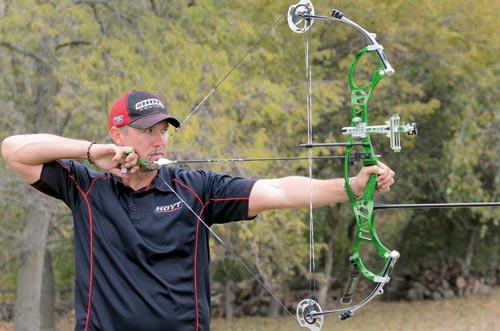

To shoot a recurve bow well, you need to train, use the right method, and keep your form steady. For hunters of all levels, here are some important tips:
For Beginners
Stance: Stand with your feet shoulder-width apart, facing your target. Keep your body relaxed and balanced. A stable stance is crucial for maintaining control during the shot.
Grip: Hold the grip firmly but comfortably, ensuring your fingers are properly positioned on the grip. Avoid gripping too tightly, as this can lead to tension in your arms and affect your accuracy.
Draw: Draw the bowstring back smoothly and evenly, using your back muscles to create a consistent draw. Focus on maintaining a straight line from your elbow to your fingertips throughout the draw process.
Anchor: Anchor the bowstring to a specific point on your face, such as your cheekbone or chin. Consistency in your anchor point is crucial for accuracy, as it helps establish a repeatable shooting form.
Release: Release the string gently and smoothly, avoiding any sudden movements or jerking. A clean release will result in better arrow flight and improved accuracy.
For Intermediate Archers
Focus on Form: Pay close attention to your stance, grip, draw, anchor, and release. Consistency is key to achieving accuracy. Regularly check your form and make adjustments as needed.
Practice Basic Shots: Master the fundamentals of shooting before moving on to more advanced techniques. Developing a strong foundation will set you up for success as you progress in your archery journey.
Develop a Routine: Establish a consistent pre-shot routine to help you stay focused and calm. A routine can help alleviate nerves and improve concentration, ultimately leading to better performance.
For Advanced Archers
Experiment with Techniques: Explore advanced techniques such as split-vision, gap shooting, and aiming systems. Finding what works best for you can enhance your shooting experience and improve your overall performance.
Analyze Your Shots: Carefully review your shots, identifying areas for improvement and refining your technique. Keeping a journal of your practice sessions can help you track your progress and make necessary adjustments.
Seek Expert Guidance: Work with experienced coaches or instructors to optimize your performance and reach your full potential. Personalized feedback can provide valuable insights and accelerate your development as an archer.
Recurve Bow vs. Compound Bow: Key Differences
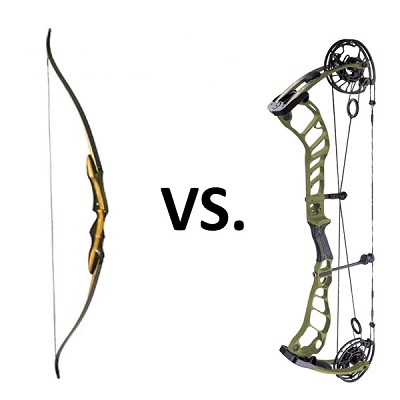

While both recurve and compound bows are used for archery, they differ significantly in their design, features, and shooting experience.
Recurve Bow
Design: Bows that recurve have simple S-shaped limbs and no complicated systems. With this style, shooting feels more like it did in the past, putting more emphasis on skill and method.
Draw Weight: Most of the time, recurve bows have smaller draw weights than compound bows, which means they take more work to draw. Because of this, recurve bows can be harder for beginners to learn, but they can be beneficial for those who take the time to get good at them.
Accuracy: With a recurve bow, aim depends a lot on the archer’s form and how consistent they are. Archers can become very accurate with practice, which makes recurve bows great for people who like to get better.
Performance: For recurve bows, you need more practice and skill to get good at them. Learning to play the bow can be hard at first, but it’s often worth it when you get good at it.
Compound Bow
Design: Compound bows have a complicated system of cams and wires that make the draw weight heavier and make it easier to hold the bow at full draw. This shape lets the arrow move faster and hit harder.
Draw Weight: Most compound bows have heavier draw weights, which lets the shot travel faster and farther. Hunters who want to kill bigger animals may find this trait useful.
Accuracy: A lot of compound bows come with sights and supports that make them more accurate. Archers can keep their aim steady with the help of the cams, which makes it easier to hit targets regularly.
Performance: Compound bows are popular among shooters because they can do better work with less effort. Compound bows are popular for both casual and professional shooting because they have a lot of new features.
Beginner’s Guide to Shooting a Recurve Bow
For people who have never done archery before, shooting a recurve bow can be fun and satisfying. Here are some important tips to get started for beginners:
Safety First
Learning simple safety rules is important before you start shooting. To keep from getting hurt, you should always wear protection gear like armguards and finger tabs. Make sure there are no things in the way of your shot and that there is a safe background behind your target.
Setting Up Your Equipment
Properly setting up your recurve bow is crucial for achieving optimal performance. Make sure your bowstring is correctly installed and that your arrows are matched to your bow’s specifications. Check your bow’s alignment and make any necessary adjustments to ensure it is ready for shooting.
Practicing Your Form
Focus on developing a consistent shooting form. Practice your stance, grip, draw, anchor, and release until they become second nature. Recording yourself while shooting can provide valuable insights into your technique and help identify areas for improvement.
Starting with Short Distances
Begin practicing at shorter distances to build confidence and accuracy. As you become more comfortable with your bow, gradually increase the distance to challenge yourself and improve your skills. Consistent practice is key to becoming a proficient archer.
Advanced Techniques for Recurve Bow Archery
Once you’ve mastered the basics, there are several advanced techniques you can explore to elevate your archery skills:
Aiming Systems
Experiment with different aiming systems, such as gap shooting or instinctive shooting. Gap shooting involves estimating the distance to your target and adjusting your aim accordingly, while instinctive shooting relies on muscle memory and intuition. Finding the right system for you can enhance your accuracy and confidence.
Mental Focus and Visualization
Mental preparation is just as important as physical practice. Develop mental focus techniques, such as visualization and mindfulness, to improve your concentration while shooting. Visualizing successful shots can help reinforce positive habits and boost your confidence during competitions.
Analyzing Performance
Regularly analyze your shooting performance to identify patterns and areas for improvement. Keep a journal of your practice sessions, noting your successes and challenges. This self-reflection can help you refine your technique and set achievable goals for your archery journey.
Tips for Maintaining Your Recurve Bow
To ensure your recurve bow remains in top condition, regular maintenance is essential. Here are some tips for keeping your bow in optimal shape:
Cleaning and Care
After each shooting session, wipe down your bow with a soft cloth to remove dirt and moisture. Pay special attention to the bowstring, as debris can affect its performance. Regular cleaning will help prolong the life of your bow and maintain its appearance.
String Maintenance
Inspect your bowstring regularly for signs of wear or fraying. If you notice any damage, replace the string immediately to prevent accidents. Waxing your bowstring periodically will help protect it from moisture and extend its lifespan.
Storage
When not in use, store your recurve bow in a cool, dry place away from direct sunlight. Use a bow case or sleeve to protect it from dust and potential damage. Proper storage will help preserve the integrity of your bow and keep it ready for action when you need it.
Common Mistakes When Using a Recurve Bow
Even experienced archers can fall victim to common mistakes that hinder their performance. Here are some pitfalls to avoid:
Poor Form
Neglecting proper form can lead to inconsistent shooting and reduced accuracy. Regularly assess your stance, grip, draw, anchor, and release to ensure you are maintaining correct technique. Consider working with a coach or instructor to receive personalized feedback.
Over gripping the Bow
Gripping the bow too tightly can create tension in your arms and shoulders, negatively impacting your shot. Aim for a relaxed grip that allows for smooth movement during the draw and release. Focus on maintaining a light touch while still having control over the bow.
Ignoring Follow-Through
Failing to follow through after releasing the arrow can affect its trajectory and accuracy. Practice maintaining your form and position even after the release, allowing your hand to move naturally toward your target. A proper follow-through is essential for achieving consistent results.
Conclusion
The recurve bow is a timeless and versatile tool that has captured the hearts of archers for centuries. Its unique design, rich history, and adaptability make it an excellent choice for both beginners and seasoned archers alike.
By understanding the various types of recurve bows, mastering essential techniques, and maintaining your equipment, you can embark on a fulfilling journey in the world of archery.
Whether you’re aiming for precision in competition or enjoying the thrill of hunting, the recurve bow offers endless possibilities for adventure and achievement.
